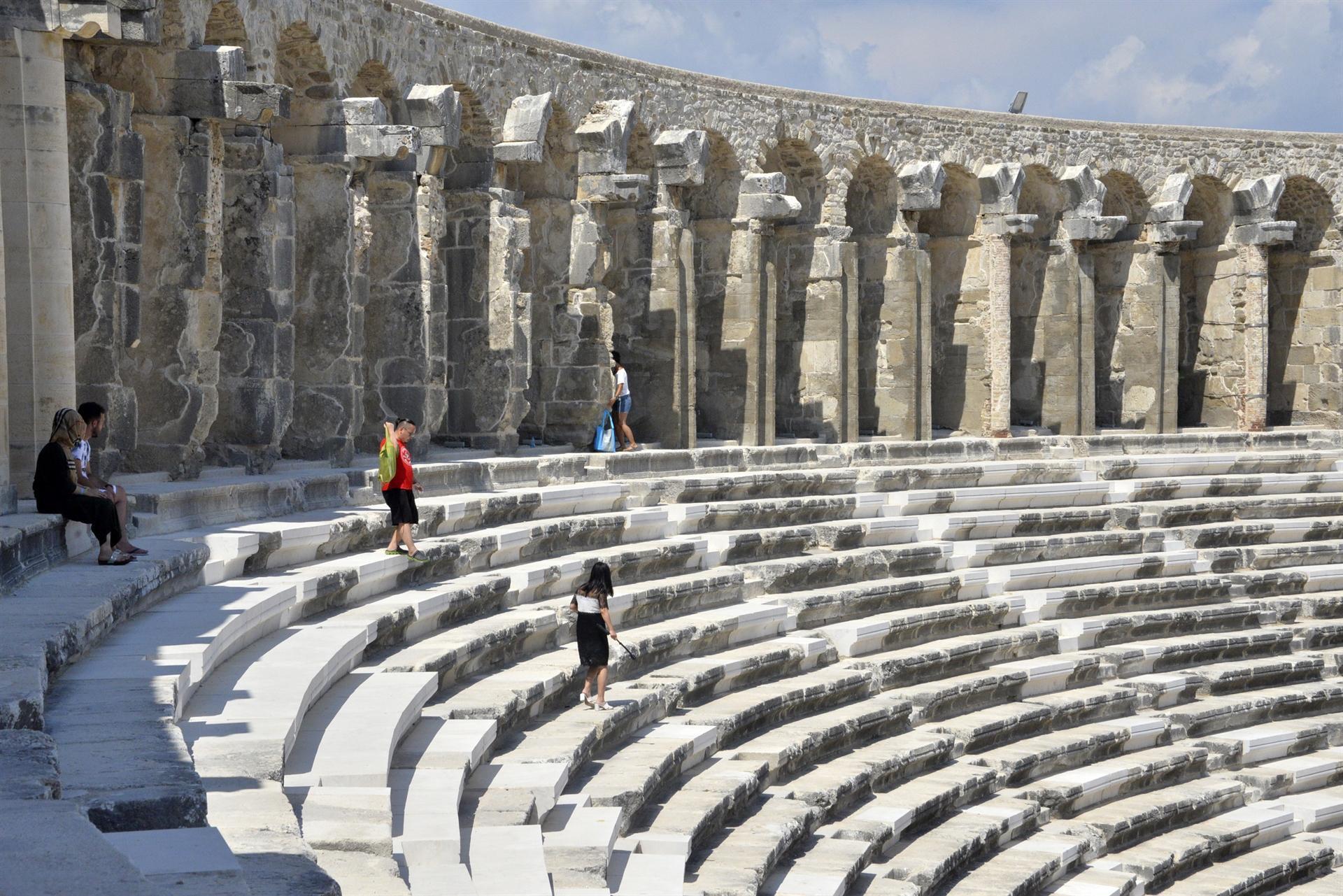
White marble stones used instead of original stones in the renovation of the steps and seats of the Aspendos Antique Theater three years ago have sparked outrage among tourists and cultural associations.
In order to prevent such restoration mistakes from happening again, as a lesson learned, samples of the materials to be used in the restoration of other structures in the ancient city such as the fountain, bath, basilica and aqueduct have undergone 33 different tests. The new restorations will be carried out according to the results of these tests.
The ancient city of Aspendos is believed to have been established by the Achaeans in the 10th century B.C. in the Serik district in the southern province of Antalya. It draws attention for its Roman-era theater, dating back to the second century A.D. and many other historical structures. Restorations are now planned for other structures in the ancient city.
The restoration of the Aspendos Antique Theater was finished in 2015 by the Antalya Directorate of Surveying and Monuments.
White marble stones used on the ancient site’s stairs and seats rather than stones of the original texture and color have caused great criticisms in the country.
As part of the master’s thesis of two students under the guidance of Akdeniz University Faculty of Engineering academic Cem Oğuz, two studies have been carried out to uncover the features of the mortar and bricks used in the renovation of the historical structures of Aspendos. The third study will be initiated on the stones.
Oğuz, who spoke about the master’s thesis of two students, Dila Metin and Naim Işık, said the work they had started in 2016 on the fountain, small bath, domus (residence in the ancient Rome), basilica and aqueduct was partially done.
There are two reasons for the studies, said Oğuz.
“First, Antalya is a historical place. The second reason why we have chosen Aspendos is that a mistake had been done here in previous years. There was some trouble that shook the country during the restoration of the theater three years ago. That is why we have chosen Aspendos. Otherwise, Perge, Myra, Olympos and other ancient cities could have been chosen. We worked here in 2016, 2017 and 2018 in excavation seasons. We determined the structures to be restored. Archaeologists are still working. In order to support them and to prevent other mistakes, we believe the science of civil engineering should be a pioneer in this field,” he said.
The academic said the 33 tests were carried out on samples taken from the fountain, bath, basilica and aqueduct.
“We have found unique features from these samples, like what mortar and brick are made of, the baking temperature of brick, etc. New recipes should be created with today’s technology by considering these features. Almost everything is done in the restoration of the theater. Restorations will continue on the other structures,” he said.
Oğuz said Hacettepe University Associate Professor Veli Köse and his team are continuing to work and collect data, and the fountain and basilica would be restored next year and the other structures would be restored in the coming years.
“The results of these tests will be used in these restorations, especially for the stones and mortar because their unique features should be kept,” he said.